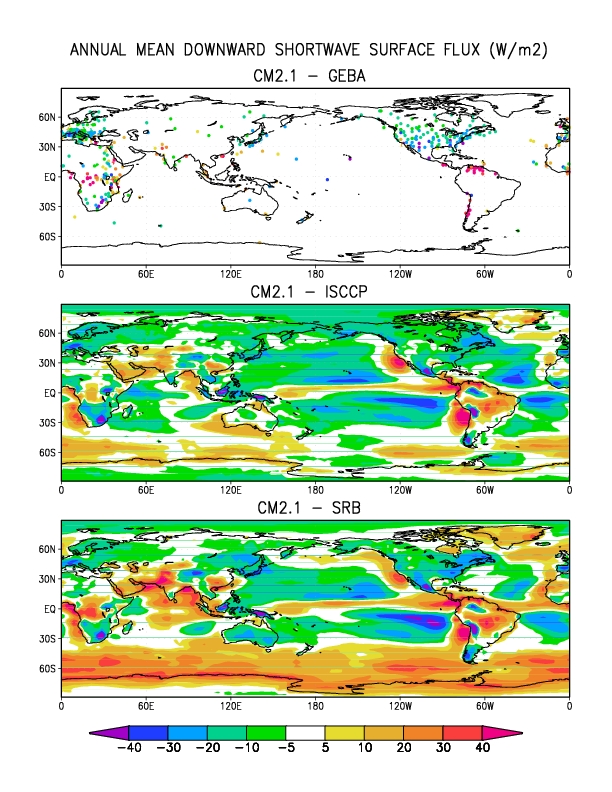Radiation
Shortwave radiative transfer is the process by which the sun’s radiative energy or flux is distributed in the Earth’s atmosphere. One focus of the research is to improve its parameterization for use in the GFDL general circulation model (GCM). This is achieved by utilizing more refined parameterizations that account for absorption by various gases in the atmosphere and better resolve the complex spectral dependencies of absorption and scattering in the presence of clouds and aerosols. In this process, the solar flux absorbed in the atmosphere, and the vertical distribution of heating are tested for numerical accuracy against corresponding results obtained from high quality “benchmark” calculations.
A second area of research involves the validation of the shortwave fluxes obtained at the surface from the GFDL GCM through use of various satellite-based and ground-based measurements. The goal is to delineate significant biases in atmospheric absorption that occur, both globally averaged and geographically. Such information can be utilized as a diagnostic tool, especially in conjunction with corresponding biases in other pertinent quantities, to point out improvements needed in the GCM. An example of such an analysis is shown in the accompanying figure. Here, the annually-averaged downward shortwave flux at the surface obtained from a series of CM2.1 experiments is compared with the results obtained from three datasets: GEBA (measured), ISCCP and SRB (satellite-derived). Focusing on land areas, note the consistency in the GCM bias of underestimates over North America and Europe, and overestimates over equatorial Africa and South America. These have been correlated with corresponding biases in absorption in the atmosphere due to aerosols and/or clouds.



